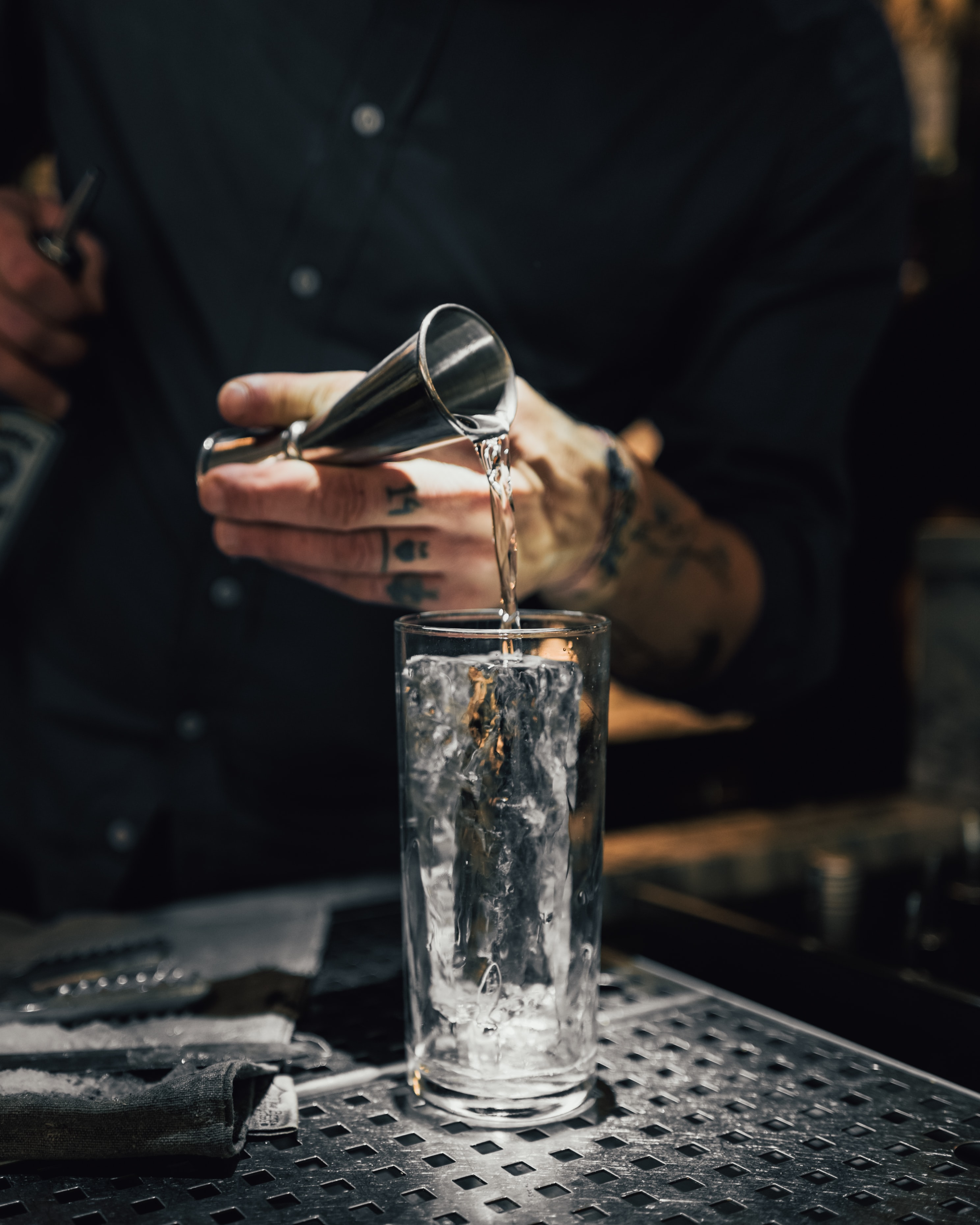The Birth of the 'Scotch and Soda': The Predecessor to the Highball
At the time, cognac was particularly in-vogue, but the Napoleonic wars did well to all but halt any cognac supply to England. The English would then find a solution in a switch to scotch whisky. This switch became permanent, and all things Scottish became fashionable when Queen Victoria described Scotland as “my dear paradise on the Highlands.” And so, the Highball’s predecessor, the scotch and soda, was born.
The first highball cocktail: What's in a highball cocktail?
A few years later in 1895, C.F. Lawlor’s “The Mixicologist” was published and featured a drink called the “Splificator” as a ‘Highball.' For the dubiously-named Splificator, Lawlor suggested the following:
One piece of ice; let customer help himself to whiskey, and fill up with Apollinaris water
This was perhaps the first true, named Highball (complete with ice!). Not too long after Lawlor published his “Splificator” recipe, the drink was featured in Harry Johnson’s “Bartenders’ Manual” (1900).
The tale goes on in an (unsurprisingly) doubtable and winding manner. In 1927, a man called Patrick Duffy took public claim of the drink. He wrote to the New York Times, claiming that the Adams House in Boston actually served America’s first Scotch Highball.
The story Duffy tells is that in 1894, a famed English actor came into his bar and ordered a Scotch and Soda. That would serve as the foundation for the Highball family of drinks, according to Duffy. However, Duffy also later claimed this to have happened at a different bar altogether.
Clearly, there’s anything but a consensus on the drink’s origins. Despite the lack of any historical agreement, the Highball is a certifiable classic — and not only stateside.
The Japanese highball cocktail
In Japan, the Highball rose to prominence with businessmen in the 60s and 70s, perhaps as a way to flex their disposal income (and deal with the increasing stresses of the time). However, the Highball fell out of fashion in Japan relatively quickly, replaced mostly by RTD cocktail options, before rising again in the 2000s. Now, the Highball is perhaps above a classic in Japan. The drink has obtained something of an iconic status there, with bartenders treating the Highball as its own sort of art form.
How much could there be to it, you may ask?
In Japan, the Highball is an ever-evolving staple of cocktail culture. You can get canned Highballs in vending machines, or you can order the swankiest Highball that money can buy. At a ‘proper’ Japanese cocktail bar, every part of the Highball is considered. From the temperature and dimensions of the glass it’s served to the number of times the drink is stirred (we’ve read not at all, and we’ve read 13.5 times, counterclockwise).
The ice is often sweated before use, as any rough edges are said to disturb the spirit. The carbonate is considered for its effervescence, the size of its bubbles, and the mineral quality of its water. While there is great variation in the cocktail’s preparation from bar to bar, each Japanese bar has its own prescribed procedure. It’s difficult to overstate the thought that goes into a true Japanese Highball.
Stateside, perhaps it’s high time we start observing a little more good practice with our Highballs. Maybe taking some cues from the Japanese isn’t such a bad idea. In a drink so simple, we at Provi would argue it’s crucial to execute each component with precision. Any ol’ chum can mix Whiskey and soda in a glass and call it a day. But to create a thoughtful, artful Highball, we think that’s something that can really stick with the guest.
Final Thoughts on Highballs
That just leaves one little question — what’s in the name? Why is it called a ‘Highball’? Well, there’s no certainty to be found here. The most obvious answer is that it is served in a ‘high’ glass. That becomes even more likely when you learn the 1890s slang term for a glass: a ‘ball’. Don’t worry...a more romantic, but perhaps less likely, answer awaits.
On 19th-century railroads, if a metal ball was raised by the signal post (a high ball), that acted as a green light for a train. Perhaps one thing led to another, and this translated into a slang term for a drink that could be speedily consumed. However unlikely, we’re in no place to call this unequivocally false. Besides, we do love a good story. And as you know, so does a guest, after a couple of fine cocktails.
So, cheers to the ever-versatile, ever-changing, but always-cool Highball. Classic drinks always have a place on any menu, as far as we’re concerned. And when that drink is an essentially blank canvas like the Highball, we vote yay every time. Get out there and drink as your great granpappy did! We know we will.





Comments